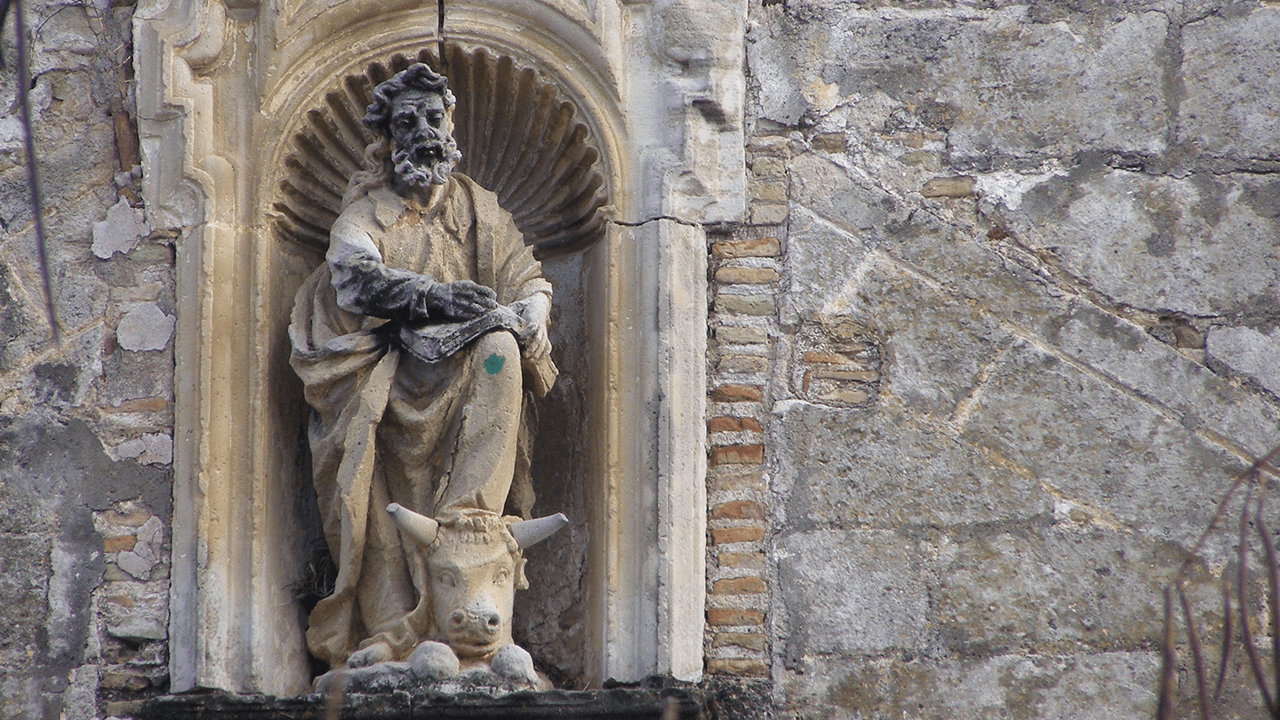The Tomb of St. Luke in Ephesus: A Tribute to the Evangelist and Patron of Physicians
The Tomb of Saint Luke in Ephesus is a site of great religious and cultural significance. This circular structure, known as the “Tomb of Saint Luke,” pays homage to the apostle and evangelist Luke, who was the author of the Gospel of Luke and a companion of the apostle Paul. His life and legacy have made him a symbol of faith and devotion.
Who Was Saint Luke?
Saint Luke was born in Antioch and developed an early interest in knowledge, studying Greek philosophy, medicine, and art. After traveling to Jerusalem, he converted to Christianity and joined the teachings of the apostles. In addition to writing the Gospel of Luke, he is also the author of the Acts of the Apostles, a fundamental work in the New Testament.
Saint Luke and His Death in Thebes
At the age of 84, Saint Luke was martyred in Thebes, in the region of Boeotia, where he was tortured and hung from an olive tree by idol worshippers. This tragic end reinforced his symbolism as a martyr and the protector of physicians, as Saint Luke was recognized as a doctor and the patron saint of this profession, as well as of artists and craftsmen due to his skill in painting.
The Symbol of the Bull: Meaning and Significance
Saint Luke’s symbol is the bull, one of the four creatures mentioned in the prophet Ezekiel’s vision (1:10). According to Saint Irenaeus, the bull represents Christ’s sacrifice and the priesthood. This deep symbolism has been associated with the Tomb of Saint Luke in Ephesus, where a carved bull at the entrance highlights his relevance as the apostle’s symbol.
The Bull at the Entrance of the Tomb
The depiction of the bull at the tomb’s entrance is a visual reminder of sacrifice and Saint Luke’s priestly service. This symbolism is appreciated by both believers and visitors, who recognize the bull as an emblem of Saint Luke’s role in Christianity.
Saint Luke: Patron of Physicians and Artists
Saint Luke is recognized as the patron saint of physicians due to his dedication to medicine. Additionally, he is attributed with artistic skill, which has made him the patron saint of artists, painters, sculptors, and craftsmen. This dual devotion to health and the arts makes him a particularly revered figure.
The Influence of Saint Luke on Art and Medicine
The image of Saint Luke has been a recurring one in Christian art, where he is often depicted painting or with a bull by his side. His influence extends not only to faith but also to medicine and the arts, fields that recognize him as an intercessor and spiritual guide.
The Tomb of Saint Luke in Ephesus: A Place of Pilgrimage
Located in Ephesus, the circular tomb of Saint Luke is a place visited by pilgrims seeking a connection to faith and the legacy of this evangelist. This site invites reflection and is an important stop for those wishing to explore Christianity’s apostolic roots.
The Significance of the Tomb for Visitors
For the faithful, the Tomb of Saint Luke represents a place of reverence and respect. His history, writings, and legacy in Christianity make this tomb a sacred site that strengthens devotion and inspiration in the Christian faith.
Tips for Visiting the Tomb of Saint Luke
- Location: The tomb is situated in Ephesus, in an easily accessible area for those visiting the ancient city.
- Best time to visit: Morning and sunset are ideal to avoid the heat and for a more peaceful experience.
- Respect for the site: As a sacred site, visitors are encouraged to respect the area and refrain from touching structures or engaging in activities that are not permitted.
Conclusion
The Tomb of Saint Luke in Ephesus is a lasting symbol of the life and legacy of the apostle, evangelist, and patron of physicians and artists. His history, his symbolism, and his connection to the bull make him a central figure in Christian tradition. Visiting his tomb is an opportunity to deepen spirituality and honor the life of a man whose faith and dedication have transcended the centuries.





3 thoughts on “The Tomb of St. Luke”
★★★★★
Looking for an authentic and enriching experience? ‘The Tomb of St. Luke’ is the place to be! Absolutely worth the visit.
★★★★★
The charm of ‘The Tomb of St. Luke’ captivated me entirely. It’s a destination that leaves no one indifferent.
★★★★★
Highly recommend visiting ‘The Tomb of St. Luke’—a site rich with history and unparalleled beauty.